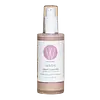What's inside
What's inside
 Key Ingredients
Key Ingredients

 Benefits
Benefits

 Concerns
Concerns

 Ingredients Side-by-side
Ingredients Side-by-side

Water
Skin ConditioningCitrus Aurantium Amara Flower Water
MaskingGlycerin
HumectantCetearyl Olivate
Sorbitan Olivate
EmulsifyingRicinus Communis Seed Oil
MaskingKaolin
AbrasiveSalix Alba Bark Extract
AstringentBenzyl Alcohol
PerfumingGlyceryl Caprylate
EmollientGlyceryl Undecylenate
EmollientAnthemis Nobilis Flower Extract
MaskingOryza Sativa Powder
Rosmarinus Officinalis Leaf Extract
AntimicrobialTocopherol
AntioxidantCarica Papaya Fruit Extract
Skin ConditioningCymbopogon Martini Oil
MaskingCitrus Aurantium Bergamia Fruit Oil
MaskingXanthan Gum
EmulsifyingCitric Acid
BufferingWater, Citrus Aurantium Amara Flower Water, Glycerin, Cetearyl Olivate, Sorbitan Olivate, Ricinus Communis Seed Oil, Kaolin, Salix Alba Bark Extract, Benzyl Alcohol, Glyceryl Caprylate, Glyceryl Undecylenate, Anthemis Nobilis Flower Extract, Oryza Sativa Powder, Rosmarinus Officinalis Leaf Extract, Tocopherol, Carica Papaya Fruit Extract, Cymbopogon Martini Oil, Citrus Aurantium Bergamia Fruit Oil, Xanthan Gum, Citric Acid
Water
Skin ConditioningCocamidopropyl Hydroxysultaine
CleansingCoco-Betaine
CleansingSodium Lauroyl Oat Amino Acids
CleansingDecyl Glucoside
CleansingSodium Cocoyl Sarcosinate
CleansingAcrylates Copolymer
Copernicia Cerifera Wax
Jojoba Esters
EmollientSodium Chloride
MaskingPolysorbate 20
EmulsifyingDisodium Cocoyl Glutamate
CleansingCitrus Limon Peel Oil
MaskingCitrus Grandis Peel Oil
MaskingMentha Viridis Leaf Oil
AstringentPanax Ginseng Root Extract
EmollientCaffeine
Skin ConditioningGarcinia Mangostana Peel Extract
Skin ConditioningCordyceps Sinensis Extract
AntioxidantButylene Glycol
HumectantEthylhexylglycerin
Skin ConditioningGlycerin
HumectantAloe Barbadensis Leaf Juice
Skin ConditioningSodium Cocoyl Glutamate
CleansingMonosodium Citrate
BufferingCitric Acid
BufferingSodium Hydroxide
BufferingDisodium EDTA
Methylchloroisothiazolinone
PreservativeMethylisothiazolinone
PreservativePhenoxyethanol
PreservativeAquilaria Agallocha Wood Oil
MaskingWater, Cocamidopropyl Hydroxysultaine, Coco-Betaine, Sodium Lauroyl Oat Amino Acids, Decyl Glucoside, Sodium Cocoyl Sarcosinate, Acrylates Copolymer, Copernicia Cerifera Wax, Jojoba Esters, Sodium Chloride, Polysorbate 20, Disodium Cocoyl Glutamate, Citrus Limon Peel Oil, Citrus Grandis Peel Oil, Mentha Viridis Leaf Oil, Panax Ginseng Root Extract, Caffeine, Garcinia Mangostana Peel Extract, Cordyceps Sinensis Extract, Butylene Glycol, Ethylhexylglycerin, Glycerin, Aloe Barbadensis Leaf Juice, Sodium Cocoyl Glutamate, Monosodium Citrate, Citric Acid, Sodium Hydroxide, Disodium EDTA, Methylchloroisothiazolinone, Methylisothiazolinone, Phenoxyethanol, Aquilaria Agallocha Wood Oil
Ingredients Explained
These ingredients are found in both products.
Ingredients higher up in an ingredient list are typically present in a larger amount.
Citric Acid is an alpha hydroxy acid (AHA) naturally found in citrus fruits like oranges, lemons, and limes.
Like other AHAs, citric acid can exfoliate skin by breaking down the bonds that hold dead skin cells together. This helps reveal smoother and brighter skin underneath.
However, this exfoliating effect only happens at high concentrations (20%) which can be hard to find in cosmetic products.
Due to this, citric acid is usually included in small amounts as a pH adjuster. This helps keep products slightly more acidic and compatible with skin's natural pH.
In skincare formulas, citric acid can:
While it can provide some skin benefits, research shows lactic acid and glycolic acid are generally more effective and less irritating exfoliants.
Most citric acid used in skincare today is made by fermenting sugars (usually from molasses). This synthetic version is identical to the natural citrus form but easier to stabilize and use in formulations.
Read more about some other popular AHA's here:
Learn more about Citric AcidGlycerin is already naturally found in your skin. It helps moisturize and protect your skin.
A study from 2016 found glycerin to be more effective as a humectant than AHAs and hyaluronic acid.
As a humectant, it helps the skin stay hydrated by pulling moisture to your skin. The low molecular weight of glycerin allows it to pull moisture into the deeper layers of your skin.
Hydrated skin improves your skin barrier; Your skin barrier helps protect against irritants and bacteria.
Glycerin has also been found to have antimicrobial and antiviral properties. Due to these properties, glycerin is often used in wound and burn treatments.
In cosmetics, glycerin is usually derived from plants such as soybean or palm. However, it can also be sourced from animals, such as tallow or animal fat.
This ingredient is organic, colorless, odorless, and non-toxic.
Glycerin is the name for this ingredient in American English. British English uses Glycerol/Glycerine.
Learn more about GlycerinWater. It's the most common cosmetic ingredient of all. You'll usually see it at the top of ingredient lists, meaning that it makes up the largest part of the product.
So why is it so popular? Water most often acts as a solvent - this means that it helps dissolve other ingredients into the formulation.
You'll also recognize water as that liquid we all need to stay alive. If you see this, drink a glass of water. Stay hydrated!
Learn more about Water